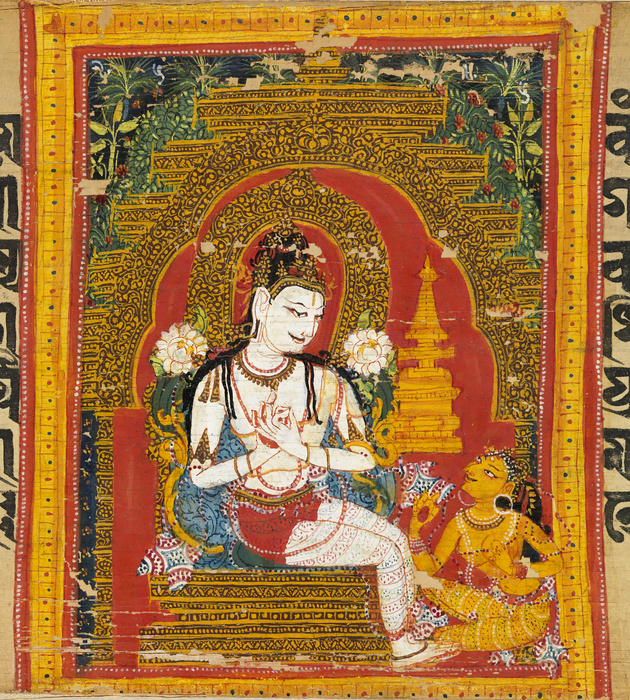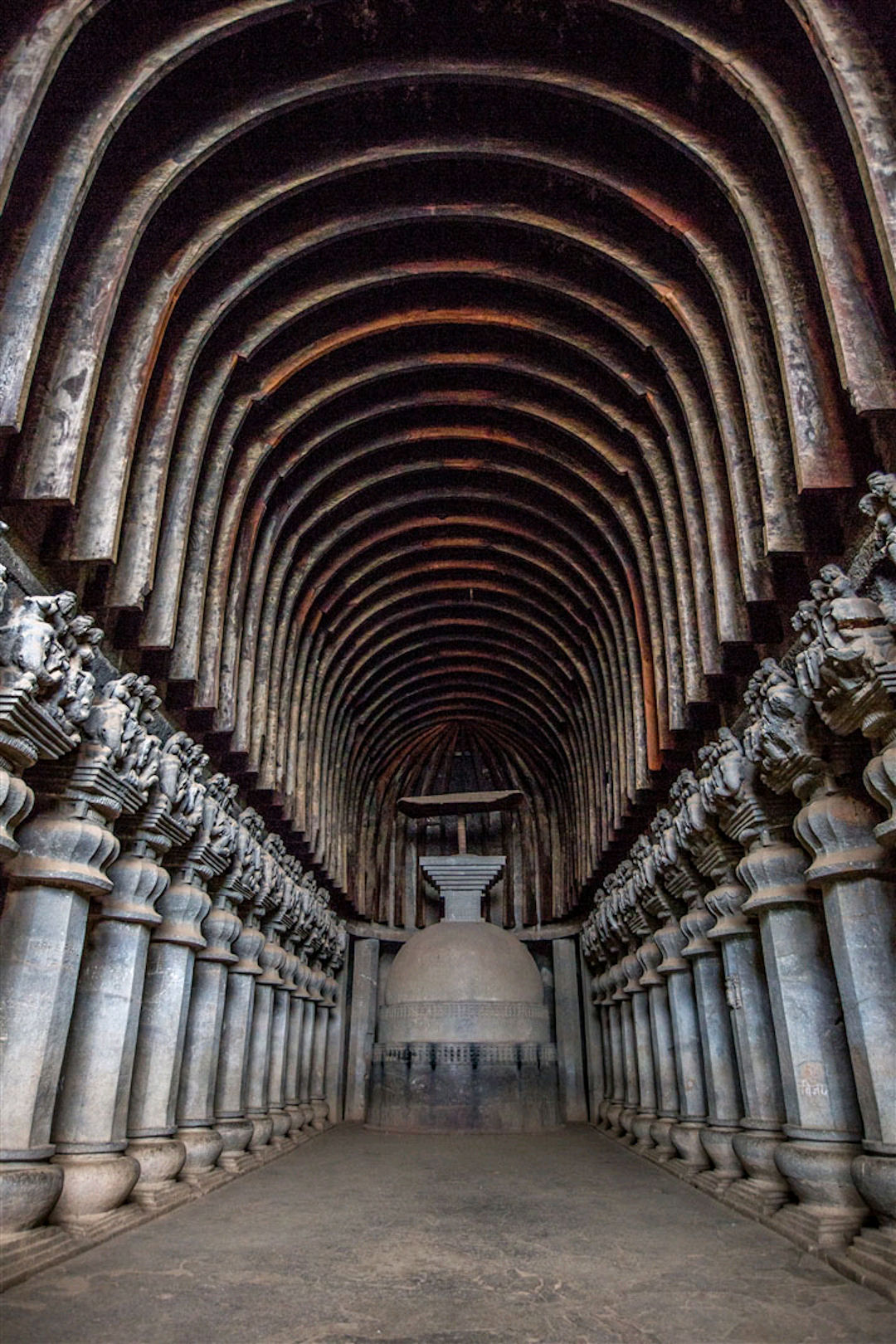|
Arhat
In Buddhism, an ''arhat'' (Sanskrit: अर्हत्) or ''arahant'' (Pali: अरहन्त्, 𑀅𑀭𑀳𑀦𑁆𑀢𑁆) is one who has gained insight into the true nature of existence and has achieved '' Nirvana'' and liberated from the endless cycle of rebirth. Mahayana Buddhist traditions have used the term for people far advanced along the path of Enlightenment, but who may not have reached full Buddhahood. The understanding of the concept has changed over the centuries, and varies between different schools of Buddhism and different regions. A range of views on the attainment of arhats existed in the early Buddhist schools. The Sarvāstivāda, Kāśyapīya, Mahāsāṃghika, Ekavyāvahārika, Lokottaravāda, Bahuśrutīya, Prajñaptivāda, and Caitika schools all regarded arhats as imperfect in their attainments compared to buddhas.Sree Padma. Barber, Anthony W. ''Buddhism in the Krishna River Valley of Andhra''. 2008. p. 44Warder, A.K. ''Indian Bud ... [...More Info...] [...Related Items...] OR: [Wikipedia] [Google] [Baidu] |
Eighteen Arhats
The Eighteen Arhats (or Luohan) () are depicted in Chinese Buddhism as the original followers of Gautama Buddha (''arhat'') who have followed the Noble Eightfold Path and attained the four stages of enlightenment. They have reached the state of Nirvana and are free of worldly cravings. They are charged to protect the Buddhist faith and to wait on earth for the coming of Maitreya, an enlightened Buddha prophesied to arrive on earth many millennia after Gautama Buddha's death (parinirvana). In China, the eighteen arhats are also a popular subject in Buddhist art, such as the famous Chinese group of glazed pottery luohans from Yixian from about 1000 CE. In China Originally, the arhats were composed of only 10 disciples of Gautama Buddha, although the earliest Indian sutras indicate that only 4 of them, Pindola, Kundadhana, Panthaka and Nakula, were instructed to await the coming of Maitreya. Earliest Chinese representations of the arhats can be traced back to as early as the fou ... [...More Info...] [...Related Items...] OR: [Wikipedia] [Google] [Baidu] |
Nirvana (Buddhism)
Nirvana (Sanskrit: निर्वाण, '; Pali: ') is "blowing out" or "quenching" of the activities of the worldly mind and its related suffering. Nirvana is the goal of the Hinayana and Theravada Buddhist paths, and marks the soteriological release from worldly suffering and rebirths in ''saṃsāra''. Nirvana is part of the Third Truth on "cessation of '' dukkha''" in the Four Noble Truths, and the "'' summum bonum'' of Buddhism and goal of the Eightfold Path." In the Buddhist tradition, nirvana has commonly been interpreted as the extinction of the "three fires", or "three poisons", greed ('' raga''), aversion ('' dvesha'') and ignorance ('' moha''). When these ''fires'' are extinguished, release from the cycle of rebirth (''saṃsāra'') is attained. Nirvana has also been claimed by some scholars to be identical with '' anatta'' (non-self) and '' sunyata'' (emptiness) states though this is hotly contested by other scholars and practicing monks. ; ; In time, with the ... [...More Info...] [...Related Items...] OR: [Wikipedia] [Google] [Baidu] |
Bodhisattva
In Buddhism, a bodhisattva ( ; sa, 𑀩𑁄𑀥𑀺𑀲𑀢𑁆𑀢𑁆𑀯 (Brahmī), translit=bodhisattva, label=Sanskrit) or bodhisatva is a person who is on the path towards bodhi ('awakening') or Buddhahood. In the Early Buddhist schools as well as modern Theravada Buddhism, a bodhisattva ( Pali: ''bodhisatta'') refers to someone who has made a resolution to become a Buddha and has also received a confirmation or prediction from a living Buddha that this will be so. In Mahayana Buddhism, a bodhisattva refers to anyone who has generated '' bodhicitta'', a spontaneous wish and compassionate mind to attain Buddhahood for the benefit of all sentient beings. Mahayana bodhisattvas are spiritually heroic persons that work to attain awakening and are driven by a great compassion (''mahakaruṇā''). These beings are exemplified by important spiritual qualities such as the "four divine abodes" ('' brahmaviharas'') of loving-kindness (''metta''), compassion ('' karuṇā''), e ... [...More Info...] [...Related Items...] OR: [Wikipedia] [Google] [Baidu] |
Mahayana
''Mahāyāna'' (; "Great Vehicle") is a term for a broad group of Buddhist traditions, texts, philosophies, and practices. Mahāyāna Buddhism developed in India (c. 1st century BCE onwards) and is considered one of the three main existing branches of Buddhism (the other being ''Theravāda'' and Vajrayana).Harvey (2013), p. 189. Mahāyāna accepts the main scriptures and teachings of early Buddhism but also recognizes various doctrines and texts that are not accepted by Theravada Buddhism as original. These include the Mahāyāna Sūtras and their emphasis on the ''bodhisattva'' path and ''Prajñāpāramitā''. '' Vajrayāna'' or Mantra traditions are a subset of Mahāyāna, which make use of numerous tantric methods considered to be faster and more powerful at achieving Buddhahood by Vajrayānists. "Mahāyāna" also refers to the path of the bodhisattva striving to become a fully awakened Buddha ('' samyaksaṃbuddha'') for the benefit of all sentient beings, and is thu ... [...More Info...] [...Related Items...] OR: [Wikipedia] [Google] [Baidu] |
Buddhahood
In Buddhism, Buddha (; Pali, Sanskrit: 𑀩𑀼𑀤𑁆𑀥, बुद्ध), "awakened one", is a title for those who are awake, and have attained nirvana and Buddhahood through their own efforts and insight, without a teacher to point out the dharma ( Sanskrit 𑀥𑀭𑁆𑀫; Pali ''dhamma''; "right way of living"). The title is most commonly used for Gautama Buddha, the founder of Buddhism, who is often simply known as "the Buddha". Buddhahood ( sa, 𑀩𑀼𑀤𑁆𑀥𑀢𑁆𑀯, buddhatva; pi, buddhatta or ; ) is the condition and rank of a buddha "awakened one". This highest spiritual state of being is also termed ''sammā-sambodhi'' (skt. samyaksaṃbodhi 'full complete awakening'). The title is also used for other beings who have achieved ''bodhi'' (awakening) and '' moksha'' (release from craving), such as the other human Buddhas who achieved enlightenment before Gautama, the five celestial Buddhas worshiped primarily in Mahayana, and the bodhisattv ... [...More Info...] [...Related Items...] OR: [Wikipedia] [Google] [Baidu] |
Sixteen Arhats
The Sixteen Arhats (Chinese: 十六羅漢, pinyin: ''Shíliù Luóhàn'', Rōmaji: ''Jūroku Rakan''; Tibetan: གནས་བརྟན་བཅུ་དྲུག, "Neten Chudrug") are a group of legendary Arhats in Buddhism. The grouping of sixteen Arhats was brought to China, and later to Tibet, from India. In China, an expanded group of Eighteen Arhats later became much more popular, but worship of the sixteen Arhats still continues to the present day in China, Japan and Tibet. In Japan sixteen Arhats are particularly popular in Zen Buddhism, where they are treated as examples of behaviour. In Tibet, the sixteen Arhats, also known as sixteen sthaviras ('elders') are the subject of a liturgical practice associated with the festival of the Buddha's birth, composed by the Kashmiri teacher Shakyahribhadra (1127-1225). They are also well represented in Tibetan art. The sixteen Arhats are: File:明 吳彬 十六羅漢圖 卷-The Sixteen Luohans MET DP153748.jpg File:明 吳彬 十 ... [...More Info...] [...Related Items...] OR: [Wikipedia] [Google] [Baidu] |
Mahāsāṃghika
The Mahāsāṃghika ( Brahmi: 𑀫𑀳𑀸𑀲𑀸𑀁𑀖𑀺𑀓, "of the Great Sangha", ) was one of the early Buddhist schools. Interest in the origins of the Mahāsāṃghika school lies in the fact that their Vinaya recension appears in several ways to represent an older redaction overall. Many scholars also look to the Mahāsāṃghika branch for the initial development of Mahayana and Vajrayana Buddhism. Location The original center of the Mahāsāṃghika sect was in Magadha, but they also maintained important centers such as in Mathura and Karli. The Kukkuṭikas were situated in eastern India around Vārāṇasī and Pāṭaliputra and the Bahuśrutīya in Kośala, Andhra, and Gandhara. The Lokottaravāda subschool itself claimed to be of the 'Middle Country', i.e. Ganges Basin region in the north of India. The Mahāsāṃghikas and the Lokottaravāda subschool also had centres in the Gandhara region.The Ekavyāvahārika are not known from later times. ... [...More Info...] [...Related Items...] OR: [Wikipedia] [Google] [Baidu] |
śrāvakayāna
Śrāvakayāna ( sa, श्रावकयान; pi, सावकयान; ) is one of the three '' yānas'' known to Indian Buddhism. It translates literally as the "vehicle of listeners .e. disciples. Historically it was the most common term used by Mahāyāna Buddhist texts to describe one hypothetical path to enlightenment. Śrāvakayāna is the path that meets the goals of an Arhat—an individual who achieves liberation as a result of listening to the teachings (or following a lineage) of a Samyaksaṃbuddha. A Buddha who achieved enlightenment through ''Śrāvakayāna'' is called a ''Śrāvakabuddha'', as distinguished from a Samyaksaṃbuddha or Pratyekabuddha. Use of the term Isabelle Onians asserts that although "the Mahāyāna ... very occasionally referred contemptuously to earlier Buddhism as the Hinayāna, the Inferior Way," "the preponderance of this name in the secondary literature is far out of proportion to occurrences in the Indian texts." She notes tha ... [...More Info...] [...Related Items...] OR: [Wikipedia] [Google] [Baidu] |
Buddhist Art
Buddhist art is visual art produced in the context of Buddhism. It includes depictions of Gautama Buddha and other Buddhas and bodhisattvas, notable Buddhist figures both historical and mythical, narrative scenes from their lives, mandalas, and physical objects associated with Buddhist practice, such as vajras, bells, stupas and Buddhist temple architecture. Buddhist art originated in the north of the Indian subcontinent, in modern India, Pakistan and Afghanistan, with the earliest survivals dating from a few centuries after the historical life of Siddhartha Gautama from the 6th to 5th century BCE. As Buddhism spread and evolved in each new host country, Buddhist art followed in its footsteps. It developed to the north through Central Asia and into Eastern Asia to form the Northern branch of Buddhist art, and to the east as far as Southeast Asia to form the Southern branch of Buddhist art. In India, Buddhist art flourished and co-developed with Hindu and Jain art, with cave t ... [...More Info...] [...Related Items...] OR: [Wikipedia] [Google] [Baidu] |
Caitika
Caitika () was an early Buddhist school, a sub-sect of the Mahāsāṃghika. They were also known as the Caityaka sect. The Caitikas proliferated throughout the mountains of South India, from which they derived their name. In Pali writings, members of this sect and its offshoots were generally referred to as the ''Andhakas'', meaning "of Coastal Andhra". History The Caitikas branched off from the main Mahāsāṃghika school in the 1st or 2nd century BCE. Epigraphic evidence of the Mahāsāṃghikas in the Mathura region dates to the first century BCE, and the ' dates the formation of the Caitikas to 300 years after the Buddha. However, the ancient Buddhist sites in the lower Kṛṣṇa Valley, including Amarāvati Stupa, Nāgārjunakoṇḍā and Jaggayyapeṭa "can be traced to at least the third century BCE, if not earlier." The Caitikas gave rise to the Aparaśailas and Uttaraśailas (also called Pūrvaśailas). Together, they comprised an important part of the M ... [...More Info...] [...Related Items...] OR: [Wikipedia] [Google] [Baidu] |
Kāśyapīya
Kāśyapīya (Sanskrit: काश्यपीय; Pali: ''Kassapiyā'' or ''Kassapikā''; ) was one of the early Buddhist schools in India. Etymology The name ''Kāśyapīya'' is believed to be derived from Kāśyapa, one of the original missionaries sent by King Ashoka to the Himavant country. The Kāśyapīyas were also called the ''Haimavatas''.Warder, A.K. ''Indian Buddhism''. 2000. p. 277 History The Kāśyapīyas are believed to have become an independent school ca. 190 BCE.Warder (1970/2004), p. 277. According to the Theravadin ''Mahāvaṃsa'', the Kāśyapīya were an offshoot of the Sarvāstivāda. However, according to the Mahāsāṃghika account, the Kāśyapīya sect descended from the Vibhajyavādins. Xuanzang and Yijing note small fragments of the Kāśyapīya sect still in existence around the 7th century, suggesting that much of the sect may have adopted the Mahāyāna teachings by this time. In the 7th century CE, Yijing grouped the Mahīśāsaka, Dharmagupta ... [...More Info...] [...Related Items...] OR: [Wikipedia] [Google] [Baidu] |





.jpeg/1200px-Gandhara_Buddha_(tnm).jpeg)




